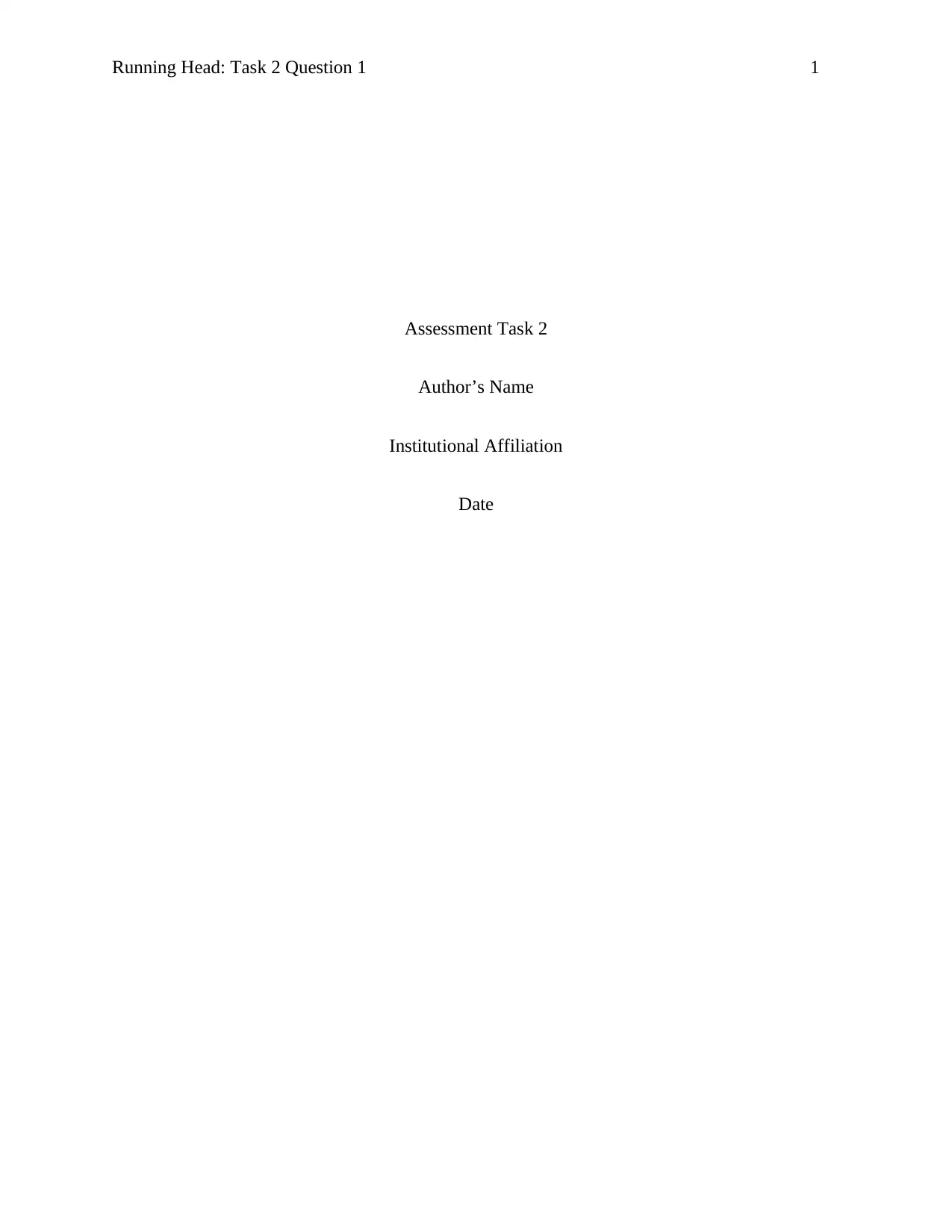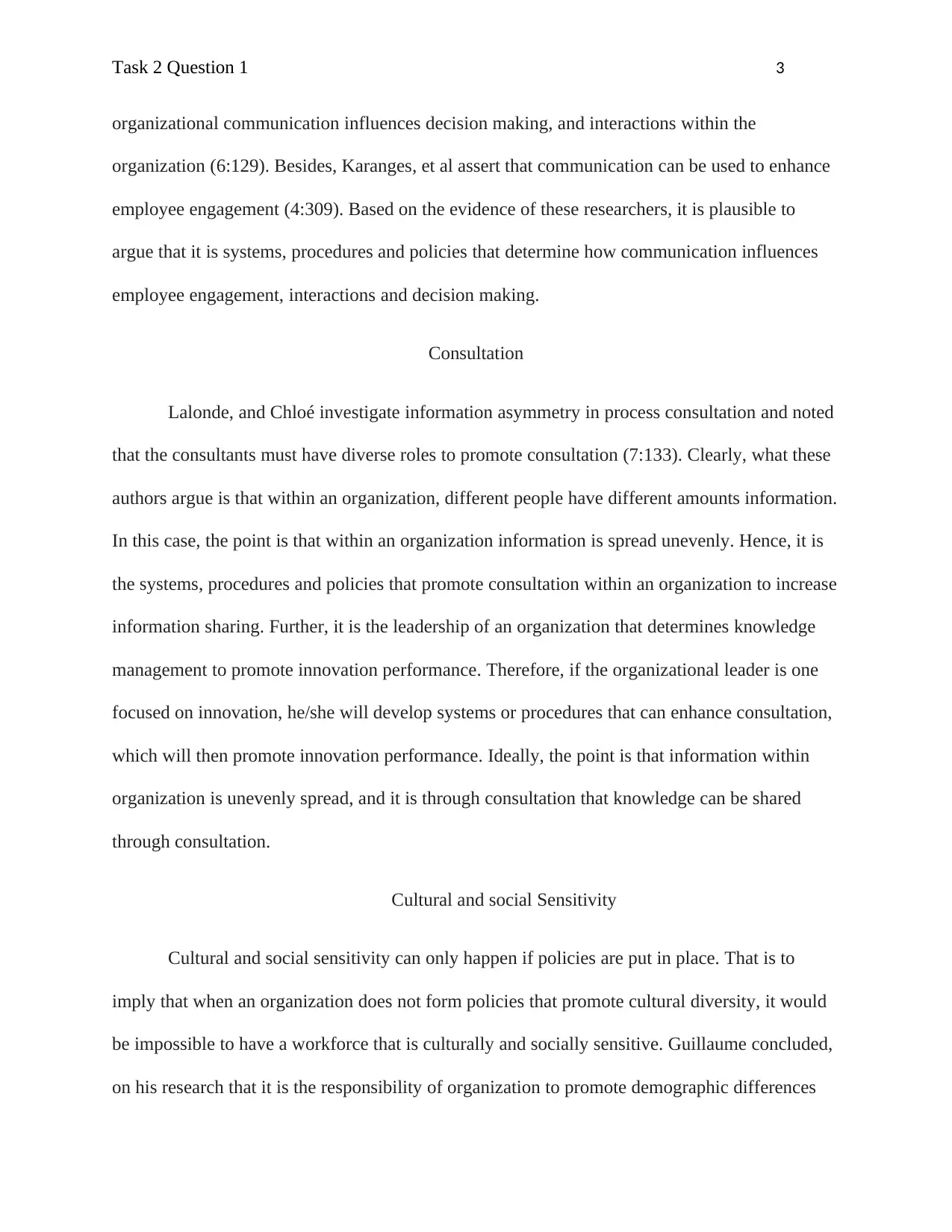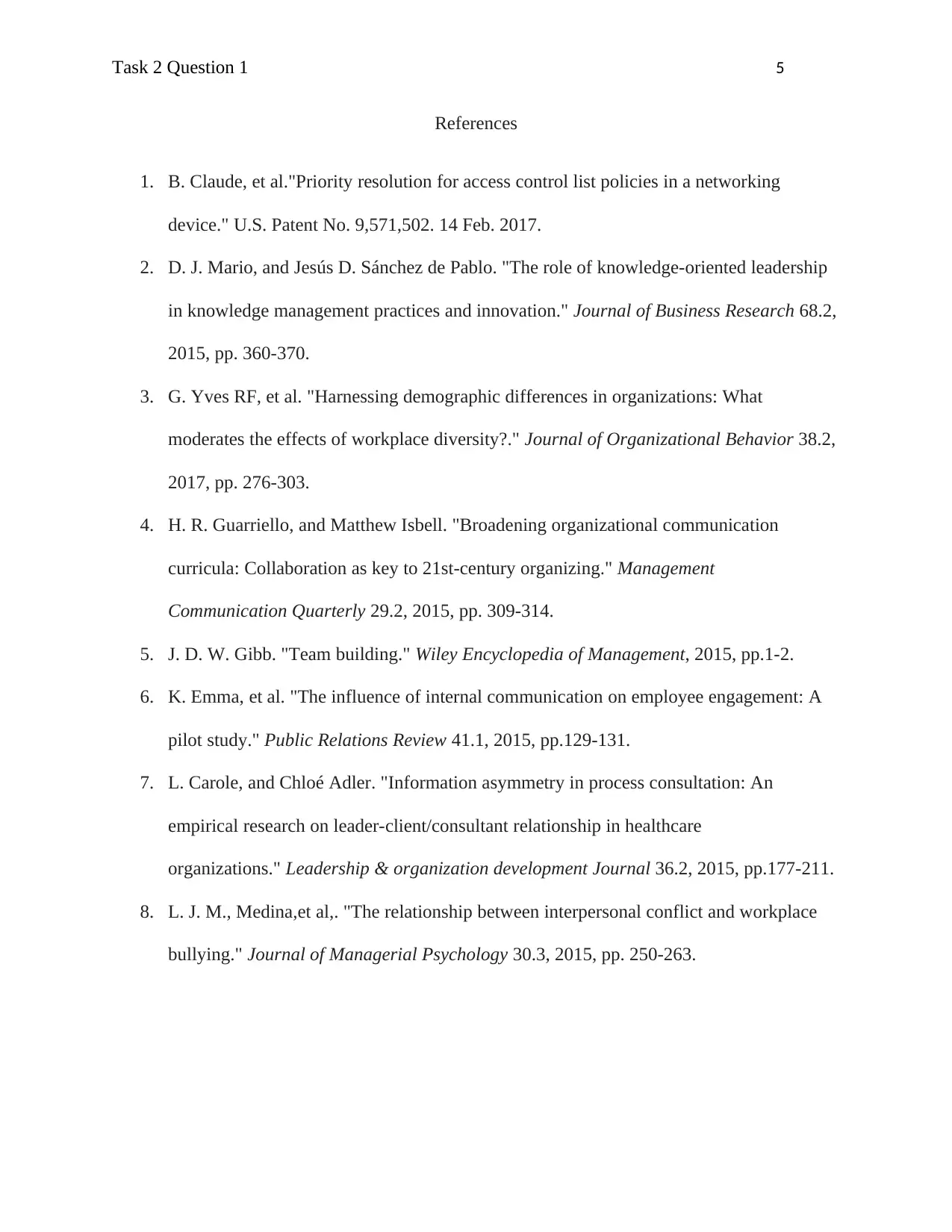Task 2 Question 1: Analyzing Systems' Impact on Interpersonal Styles
VerifiedAdded on 2023/06/03
|5
|994
|284
Essay
AI Summary
This essay examines the profound impact of organizational systems, procedures, and policies on various facets of interpersonal dynamics within the workplace. It argues that interpersonal styles are significantly shaped by established conflict resolution procedures, ethical codes of conduct, and diagnostic models for problem identification. Effective communication, crucial for decision-making and employee engagement, is also governed by these systems. The essay highlights the importance of consultation in knowledge sharing, addressing information asymmetry, and fostering innovation through leadership-driven knowledge management. Furthermore, it emphasizes that cultural and social sensitivity are cultivated through policies promoting diversity and inclusion. Ultimately, the essay posits that networking and conflict resolution are facilitated by well-defined systems, policies, and procedures, such as equal opportunity and anti-discrimination policies, thereby shaping a harmonious and productive work environment. Desklib offers a wealth of similar resources for students.
1 out of 5











![[object Object]](/_next/static/media/star-bottom.7253800d.svg)